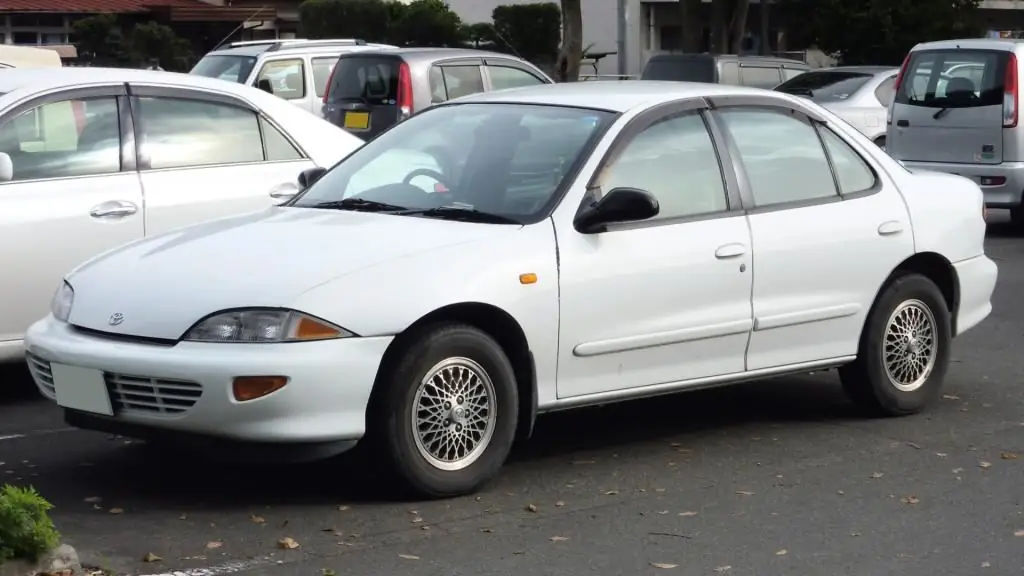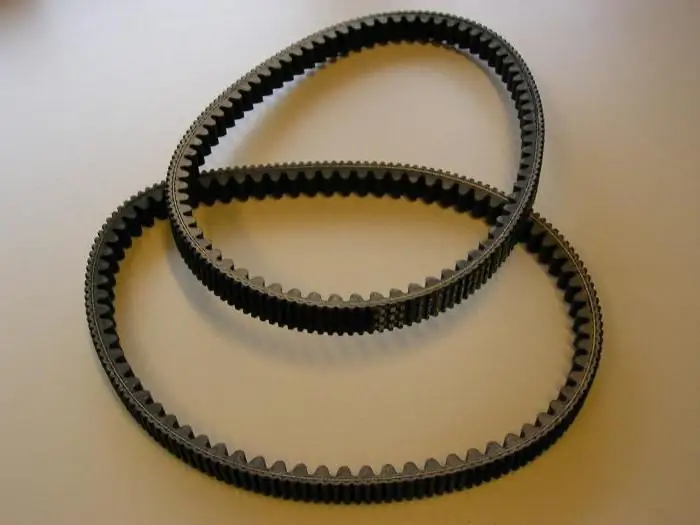2026 Author: Erin Ralphs | [email protected]. Last modified: 2025-01-22 21:14:16
One of the largest manufacturers of tractors in the USSR and in modern Russia is the Vladimir Motor Tractor Plant (VMTZ). The most famous model of the plant was a small wheeled tractor T 25, which was produced from 1966 to 2000. During this time, more than 800 thousand cars passed through the gates of the plant.
Representative of a large family
T 25 and its modifications were equipped with a two-cylinder diesel engine D 21. The engine was developed by VMTZ designers as part of a family of engines that included three-, four- and six-cylinder diesel engines. The technical characteristics of the D 21 engine fully corresponded to the requirements for a tractor of this class. All variants were equipped with a forced air cooling system. A general view of a tractor with a D 21 engine is shown in the photo below.

The engines had a wide unification in many details. The details of the cylinder-piston group, gas distribution mechanism (with the exception of camshafts) were identical.
Carter
The main part of the D 21 engine is a cast-iron crankcase (the so-called block crankcase), closed from below with a stamped oil pan. There are three supports inside the crankcasecrankshaft, as well as a pair of camshaft and balance shaft bearings. To increase rigidity, the axis of the crankshaft bearings is located above the lower plane of the block. Inside the block there are channels for supplying oil from the gear pump to the bearings.

A cast engine flywheel housing is attached to the rear of the crankcase. In front of the motor are gears for driving the camshaft and auxiliary units. The gear block is closed with a removable cover. All main engine components are mounted on the crankcase or casings of the front and rear of the motor.
On the left side of the engine (along the tractor) there is a pump for supplying fuel and pipelines for supplying fuel to the pump and to the injectors in the cylinder heads. On the same side are the air intake and exhaust manifolds. On the intake manifold is a glow plug used to heat the air. The extra heat is used to help the engine start at low temperatures.
On the frontal part of the engine there is an oil filler, an air intake of an axial fan and an hours counter. The generator is arranged on the same axis with the fan. The entire assembly is fastened with a clamp to the gear block cover. The drive is carried out by means of a belt drive from the crankshaft. On the shaft pulley there are marks of opposite dead points in the first cylinder (indicated as TDC and BDC) and a mark for the start of fuel injection into the first cylinder (mark T). Also, an oil dipstick is mounted on the front of the D 21 engine.and fuel filter system.

A decompressor is installed on the right side of the engine, which serves to facilitate starting the engine. This mechanism connects the cylinder cavity with the atmosphere and can be used for an emergency stop of the diesel engine. On the same side, fuel injection nozzles are installed in the cylinder heads. The cylinders are covered with a casing into which air is forced for cooling. An electric starter is installed at the bottom of the engine close to the flywheel housing.
Cylinder
There are two holes on the top of the block for installing individual cylinders. On the side of each there are a couple of additional holes for the valve lifter rods.
The cylinders are made of cast iron and equipped with a mounting flange and eighteen thin-walled cooling fins. There is an 8mm gap between the fins for cooling air to circulate. The ribs are not symmetrical around the circumference.

The fin is shorter on the fan side and longer on the opposite side. This is done for more uniform cooling of the cylinder. From the front and rear ends, the ribs are made short to reduce the inter-cylinder distance and the overall length of the motor as a whole. Also on the ribs are cutouts for mounting studs.
Since the material of the cylinder is a special wear-resistant cast iron, the mirror is made directly on the inner surface. When worn or damaged, the cylinder is simply replaced with a new one.
Cylinder head
Each cylinder of the D 21 engine has an individual head made of aluminum, which houses the intake and exhaust valves, the decompressor port and the injector.

The head and cylinder are attached with four studs screwed into the body of the block. Heads, like cylinders, are interchangeable. For cooling, the head is equipped with eleven fins. In the upper part of the head there are guide bushings for valves and studs for the axis of the rocker arms of the valve drive. Heat-resistant cast iron valve seats are pressed into the lower part.
Inside the head there are inlet and outlet channels that go to the left side. The intake and exhaust manifolds are studded to these channels.
Pistons
Aluminum pistons have a combustion chamber in their design. The chamber has a spherical shape and is made in the bottom of the piston.
To ensure reliable operation, the piston has three compression rings, as well as two oil scraper rings. In the grooves for the oil scraper rings, holes are made to drain the oil removed by the rings.
The piston has a different diameter along the length to reduce the likelihood of sticking during operation. The upper, more thermally loaded part of the piston has a smaller diameter than the piston skirt. This solution allows you to equalize the thermal expansion of the part during operation.
Recommended:
Features of the design and repair of the VAZ-2114 starter

In this short article, we will try to understand in as much detail as possible how the starter is repaired on the VAZ-2114. This is a device that allows you to start the engine. The starter is an electric motor that spins the crankshaft of the engine
Toyota Cavalier: features, specifications, features

Toyota Cavalier is a slightly redesigned Chevrolet model of the same name for the Japanese market. It is a bright and trouble-free car, characterized by an unusual design, good dynamics, reliability and economy. Despite this, it did not gain popularity in the Japanese market for economic reasons and due to the fact that it was inferior to local cars in terms of quality
Front edge conveyor: design features, characteristics, purpose. LuAZ-967

LuAZ-967 front edge conveyor: specifications, photos, features, operation, maintenance, photos. Amphibian LuAZ: description, purpose, modifications, design, device, test drive, pros and cons
Variator belt: dismantling and design features

Even a breakdown of the speed sensor can lead to serious consequences if it fails during fast movement and the electronic control unit puts the pulleys in an emergency position. In such a situation, the variator belt can both deform and break. If the car is moving at an average speed, then the load on the belt will be minimal
What is engine life? What is the engine life of a diesel engine?

Choosing another car, many people are interested in equipment, multimedia system, comfort. The motor resource of the engine is also an important parameter when choosing. What it is? The concept as a whole determines the operating time of the unit until the first overhaul in its life. Often the figure depends on how quickly the crankshaft wears out. But it is written in reference books and encyclopedias

